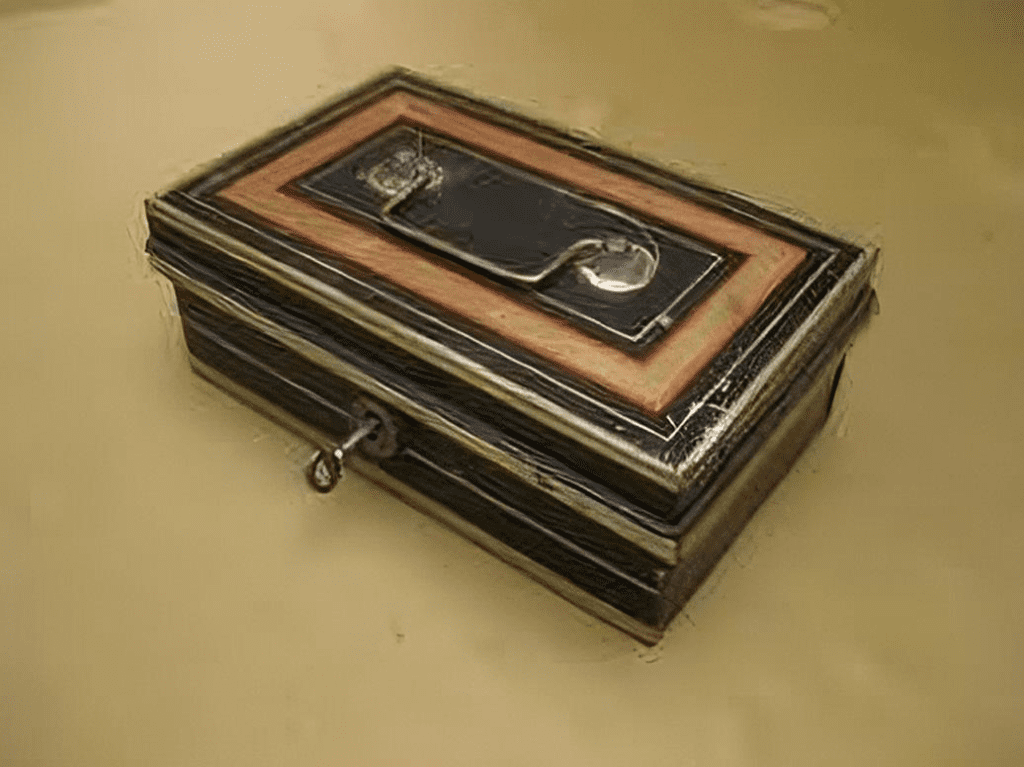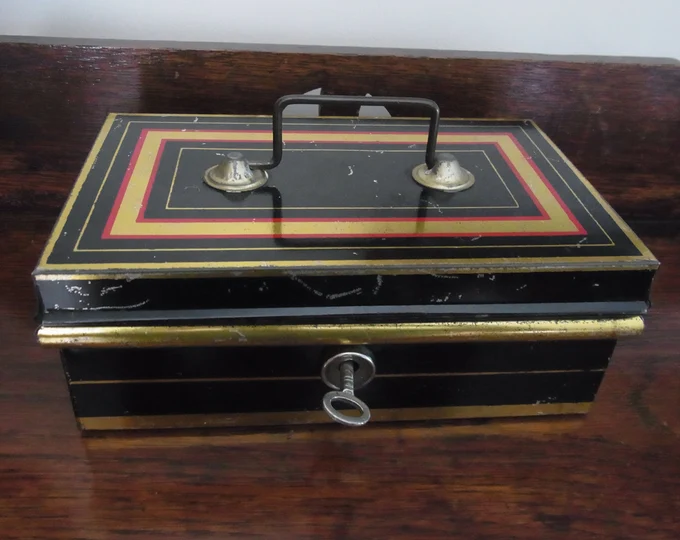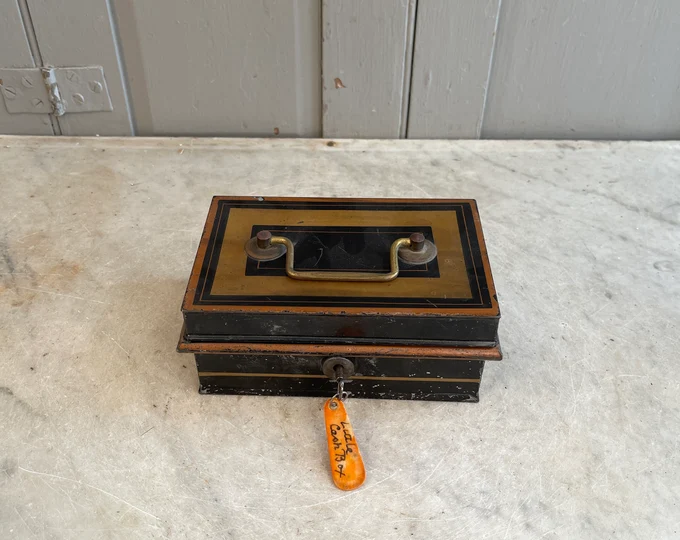Cash boxes have been an integral part of money management for centuries. From humble wooden containers in ancient times to high-tech devices today, they’ve played a crucial role in safeguarding money, valuables, and important documents. Whether it was ancient merchants carrying coins across markets or modern businesses managing cash flow, the cash box has evolved alongside human commerce, adapting to changing security needs and technological advancements.
Let’s explore the fascinating history of cash boxes and understand why they continue to be relevant in today’s digital world.
Early Beginnings: Wooden Cash Boxes of Ancient Times

The earliest cash boxes appeared in Ancient Greece, serving as basic storage solutions for merchants and traders. Made from wood, these boxes were lightweight, compact, and easy to carry—ideal for safeguarding coins, jewelry, and other precious items.
- Portable Security: In ancient marketplaces, these wooden cash boxes symbolized wealth and safety, making them essential tools for merchants who traveled frequently.
- Multipurpose Use: They weren’t just used for storing money; they also secured other valuables, making them mini-safes on the go.
Despite their simplicity, these early wooden cash boxes set the foundation for more secure and intricate designs as trade expanded and financial transactions became more complex.
The Middle Ages: Transition to Metal for Enhanced Protection
With the growth of trade during the Middle Ages, the need for stronger, more secure storage solutions became evident. Wooden cash boxes gave way to metal versions, which offered greater protection against theft and damage.
- Improved Security: Metal cash boxes—often made from iron, copper, or bronze—were sturdier and featured basic lock mechanisms, making them harder to break into.
- Larger and Heavier Designs: These boxes were generally larger than their wooden predecessors, making them less portable. They were often kept in homes, businesses, or secure storage areas.
As the value of currency and trade goods increased, so did the need for stronger security. This shift from wood to metal represented more than just material evolution; it signified a growing emphasis on wealth preservation during a time of expanding commerce.
19th Century Advancements: The Birth of the Modern Cash Box
The 19th century marked a turning point for cash boxes, driven by industrialization and technological advancements. Improved manufacturing techniques made it possible to produce cash boxes that were both secure and efficient.
- Stronger Locks: New locking mechanisms, like combination locks and more sophisticated key locks, made these cash boxes tamper-resistant.
- Portable Safes: While large safes became popular for substantial amounts of cash, smaller metal cash boxes remained essential for managing daily transactions in homes and small businesses.
- Rise of Banking Institutions: As banks grew in number and accessibility, the use of cash boxes began to shift from daily commerce to home use. They became a convenient way to store cash for immediate needs, especially in rural areas where banking services were limited.
Despite the growing presence of banks, cash boxes continued to play a vital role in cash management, particularly for small businesses and households.
20th Century: From Practical Necessity to Nostalgic Keepsake
By the 20th century, the role of the cash box began to change. As banking systems became more sophisticated, the traditional necessity for cash boxes lessened. However, they still maintained a presence in households, small businesses, and markets.
- Decorative Designs: Cash boxes evolved into more ornate, colorful, and decorative items, making them popular as keepsakes and gifts.
- Teaching Tools for Children: Many parents used cash boxes as educational tools to teach children the value of saving money and financial responsibility.
- Collectibles: Cash boxes became collectibles, valued for their historical and aesthetic appeal rather than practical use.
While digital finance was on the rise, cash boxes remained popular in markets, small businesses, and homes where handling cash was still common. They also became symbols of nostalgia, reminding people of simpler times when physical currency dominated transactions.
Modern Innovations: High-Tech Cash Boxes for Today’s World

In today’s world, cash boxes have undergone a transformation to keep up with modern security needs and technology. While they still serve the same basic function—safeguarding money and valuables—new features make them more secure, user-friendly, and adaptable.
- Digital Locks: Modern cash boxes come equipped with digital keypad locks, offering a higher level of security and ease of access.
- Built-in Alarms: Advanced models include built-in alarms that activate if unauthorized access is detected, providing an extra layer of security.
- Biodegradable Materials: Responding to environmental concerns, some manufacturers now produce cash boxes from eco-friendly materials, reducing their carbon footprint.
- Versatile Applications: Beyond homes and small businesses, today’s cash boxes are popular with street vendors, event organizers, and pop-up shops, making them versatile tools for cash handling in various settings.
These innovations ensure that cash boxes remain relevant, even in a world increasingly dominated by digital transactions.
Why Cash Boxes Still Matter in the Digital Age

With the rise of digital payment methods, it’s easy to assume that cash boxes have become obsolete. However, they continue to serve important roles in various situations:
- Cash Management: For small businesses, cash boxes are essential for managing cash transactions, especially in areas where cash payments are common.
- Secure Storage: They provide a simple and cost-effective solution for storing cash, documents, and other small valuables.
- Emergency Use: In times of crisis or natural disasters, when digital transactions may not be possible, cash boxes offer a reliable way to store emergency funds.
- Budgeting at Home: Many households still use cash boxes to manage daily or weekly budgets, making them practical tools for financial discipline.
The need for secure storage of physical currency and small valuables persists, even as digital finance grows. Cash boxes continue to be a convenient solution for these needs, maintaining their place in the modern world.
Conclusion: The Enduring Legacy of Cash Boxes
The journey of the cash box reflects the evolution of human commerce and security. From simple wooden containers in ancient Greece to modern high-tech devices, cash boxes have adapted to changing times while staying true to their core purpose: safe storage. Despite the rapid rise of digital finance, cash boxes remain symbols of financial security, tradition, and practicality.
Whether they’re used for daily transactions, safekeeping, or teaching financial responsibility, cash boxes are more than just containers—they’re historical artifacts that have stood the test of time. As technology advances, one thing is certain: the humble cash box will continue to be a valuable tool for managing cash and valuables in various settings.


